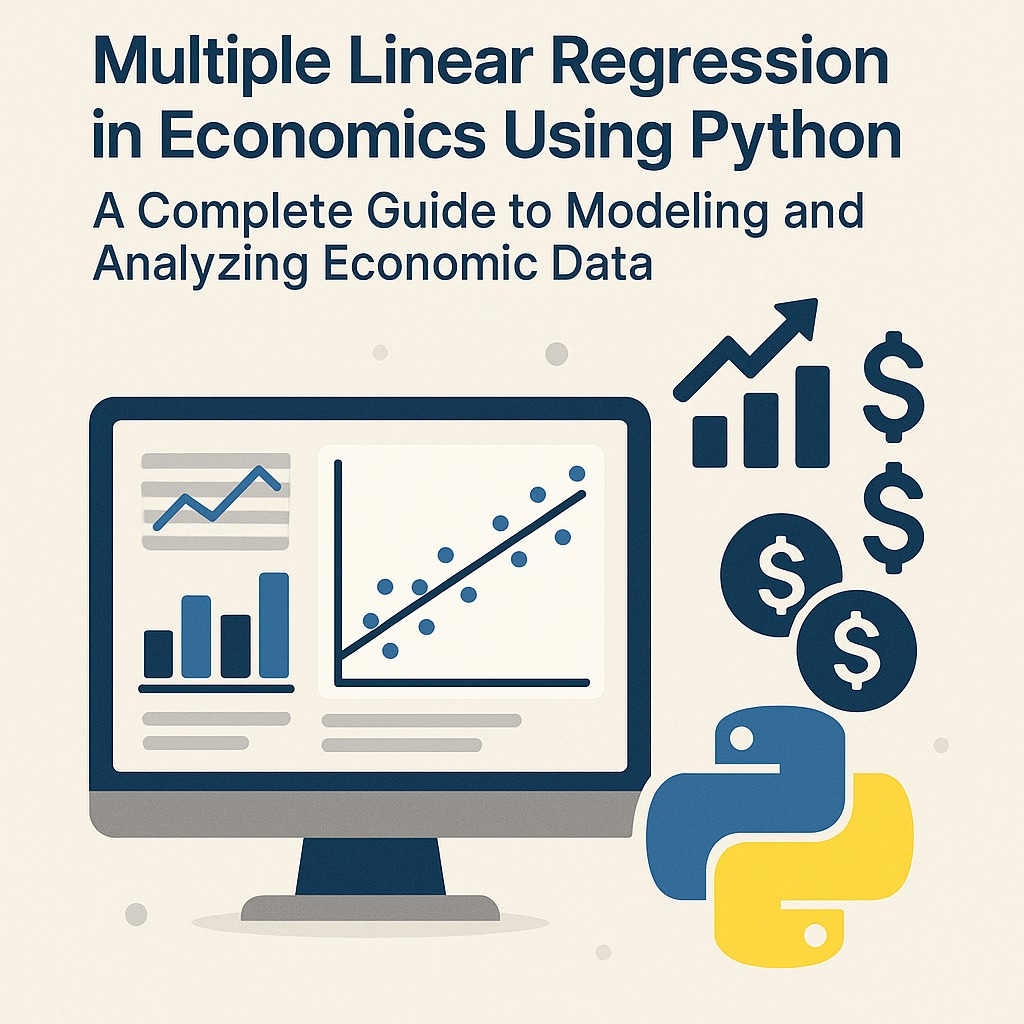Multiple Linear Regression in Economics Using Python: A Complete Guide to Modeling and Analysing Economic Data
This article provides an end-to-end workflow for using Python to apply multiple linear regression in economics, empowering analysts to rigorously model, interpret, and communicate complex economic relationships for data-driven decision-making.
Article Outline:
Introduction
The growing importance of quantitative modeling in economics
The role of multiple linear regression in analyzing economic relationships
Why Python is a powerful tool for economic analysis, modeling, and visualization
Understanding Multiple Linear Regression in Economics
What is multiple linear regression?
Key terms: coefficients, intercept, residuals, R², adjusted R²
Typical economic applications:
Modeling GDP as a function of investment, consumption, and government spending
Explaining wage variations by education, experience, and industry
Analyzing inflation using unemployment, interest rates, and money supply
Preparing Economic Data in Python
Loading required Python libraries (
pandas,numpy,statsmodels,matplotlib,seaborn)Organizing, cleaning, and exploring economic datasets
Visualizing relationships between variables before modeling
Building a Multiple Linear Regression Model in Python
Fitting a multiple regression model using
statsmodelsInterpreting regression coefficients, p-values, and adjusted R²
Extracting fitted values, residuals, and performing diagnostic checks
Evaluating and Interpreting the Model
Understanding the meaning of each coefficient in the economic context
Assessing model fit with R² and adjusted R²
Checking regression assumptions: linearity, multicollinearity, homoscedasticity, and normality of residuals
Forecasting and Scenario Analysis
Using the regression model for prediction and what-if analysis
Creating confidence intervals for forecasts
Presenting results for economic planning and policy decisions
Visualizing Multiple Regression Results in Python
Creating scatter plots, partial regression plots, and coefficient plots
Visualizing residuals and diagnostics
Making publication-ready graphics for economic reporting
Best Practices and Extensions
Handling multicollinearity and overfitting
Incorporating interaction terms and polynomial features
Extending analysis: time series regression, panel data, and machine learning methods
Conclusion
Recap of the importance of multiple linear regression in economic analysis
How Python enables reproducible, scalable, and advanced economic modeling
Next steps: expanding to nonlinear models, machine learning, and advanced forecasting
Subscribe to download the full article …
Keep reading with a 7-day free trial
Subscribe to AI, Analytics & Data Science: Towards Analytics Specialist to keep reading this post and get 7 days of free access to the full post archives.




